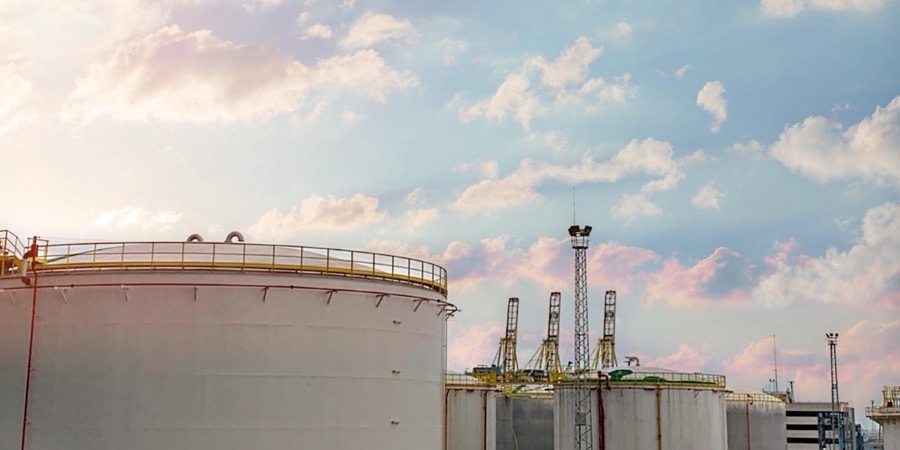Wood Mackenzie’s energy transition experts ask whether Covid-19 and the oil market crisis will accelerate or decelerate decarbonisation.
A statement from Wood Mackenzie said: “It’s now almost inevitable that the coronavirus will trigger a global recession. We’re forecasting a contraction of the global economy of at least 2%. That would mean a 5-15% reduction in carbon emissions due to diminished economic activity, lost fuel demand for things like jet fuel and road transport in travel and lifestyle, and diminished industrial and power demand.”
Altogether, this would put emissions on a pathway to two degrees ahead of schedule by about five years. However, it expects the economy to bounce back, and carbon-emitting activities along with it. It’s a question of how high and how quickly.
Are renewables still attractive to investors?
CO2 emissions are falling because of an almost complete cessation of activity in major parts of the economy in the first and second quarters of 2020. However, the investment that’s required to transition to a sustainable economy is also falling as there’s less demand to aim for in renewables sectors in the short term. Lower fossil fuel prices compound the short-term problem. The renewables industry is faced with highly competitive wholesale prices in a market that isn’t going to need a lot of new capacity to be able to keep up with demand growth.
Despite near-term challenges, the sector is showing impressive resiliency overall. With the exception of residential solar installers and panel makers and the electric vehicles sector, consumer markets highly sensitive to recession, the financial health of market participants remains strong. New deals continue to get financed and banks remain committed to sector.
Are oil and gas majors wavering in their commitment to decarbonisation?
The oil and gas sector was hit by a double whammy – a slump in demand due to the coronavirus and a price war between Saudi Arabia and Russia, which resulted in massive oversupply and record-low prices. The OPEC+ group eventually agreed to cut oil production by 10 million barrels per day. Whilst this this has mitigated the impact of a sharp drop in oil demand, the cuts in OPEC+ production are not deep enough to support oil prices needed for the sector to survive. The impact of the deal on price was limited because demand remains low and storage capacity is under pressure. It was not enough to prevent Nymex WTI crude futures from sinking into negative territory, with the May 2020 contract at one point recording a price of -$40.32 a barrel.
Before the Covid-19 crisis, the oil and gas sector had started to respond to increasing regulatory, investor and consumer pressures to tackle carbon emissions. Now, the oil and gas sector is in survival mode and is responding by cutting discretionary spend, which will undoubtedly include money set aside for decarbonisation initiatives.
Only the European majors have made meaningful progress in terms of long-term strategic diversification into clean energy. They remain committed despite today’s challenging market conditions and we expect this group to continue on their path towards clean energies
Is oil and gas still attractive to investors?
The competitiveness of oil and gas projects in comparison with renewables projects has shifted dramatically. For years, oil and gas companies have said that they can’t invest in renewable projects, which traditionally offered far lower returns than oil and gas projects, because diverting capital to low-return renewable projects was difficult to justify to stakeholders. However, in a $35-per-barrel environment, weighted average returns from yet-to-be-sanctioned oil and gas projects globally have seen a massive drop from 20% IRR in a $60-per-barrel environment to around 6% IRR. This means that oil and gas projects are now on a par with renewables. And let’s not forget that renewable projects are much lower risk, with fixed feed-in tariffs and secure long-term revenue, so they’re a very good hedging strategy for many of the oil and gas companies.
Put simply, oil and gas has become not only high-risk, and high-carbon, but now low-return, too. This is something that will not go down very well with increasingly ESG-conscious investors.
Will Asia return to low-cost high-carbon growth?
Asia Pacific accounts for nearly 50% of global energy demand and carbon emissions. Therefore, what happens in Asia will be crucial to the pace of the energy transition.
It’s a diverse region of mature markets such as Japan and South Korea, and developing markets such as China, India and Southeast Asia. Overall economic growth in Asia will be negative this year despite China recording a positive growth in 2020. That shows the severity of crisis. Lifting of lockdown measures is key, and China seems ahead of others.
The coronavirus has delivered a major blow to energy demand and there is now a massive oversupply in several sectors. Government priority is to revive economic growth and create employment and keep energy prices low.
That means China and India will return to coal-fired power to boost economic growth. However, we haven’t yet seen a major pushback on renewable energy projects other than the delays caused by supply chain issues. It’s unlikely the past will be repeated because the competitiveness of solar and wind has increased significantly since the last crisis. The renewables project pipeline also looks stronger than thermal plants.
For more information visit www.woodmac.com




















